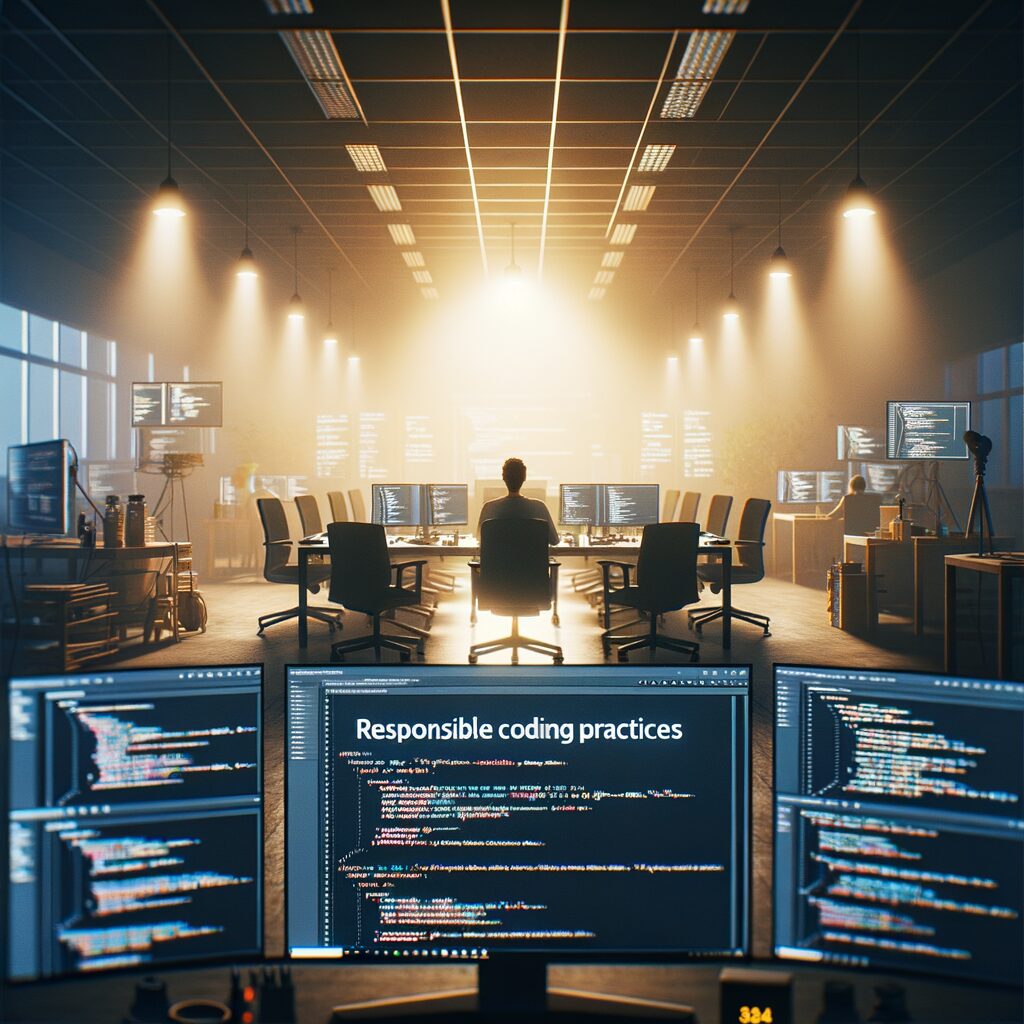How to Vibe Code Responsibly: The Modern Developer’s Cheat Sheet
The concept of “vibe coding” is catching fire as AI tools redefine software development. It’s a trend making coding as breezy as a summer afternoon—boosting feature delivery before your coffee has a chance to cool. However, the line between genius and chaos is razor-thin, and sooner or later, hasty code could find you staring into a repo abyss. This guide offers practical insights into responsibly navigating AI-assisted development, ensuring your code doesn’t become a cautionary tale.
The Magic Behind AI-Assisted Development
AI tools like GitHub’s Copilot or OpenAI’s integrations are injecting “vibe” into coding, effectively turning your IDE into a cheerful assistant. These tools suggest code completions, help with debugging, and can even generate boilerplate from minimal input. The appeal? They promise to make coding not just faster, but with a certain dashing insouciance. But is it really magic, or just the artful dodge before being caught in a “dependency hell”? Well, that’s the existential thriller we all signed up for.
AI-assisted development is like jazz; improvisation is key. But remember Miles Davis didn’t play his best solos without knowing the basics of music. Similarly, even LLM-powered programming comes with the caveat of knowledge. Not everything is a round-trip ticket to Innovation Station; sometimes, it’s a one-way ride to Debugging Dystopia.
Consider an anecdote of accepting a 60-line AI-generated diff without a second glance, only to find out your staging environment is now an avant-garde art display. A reminder: AI tools are as fallible as the data they’re trained on. They don’t free you from troubleshooting; they just free up more time to do it.
Flow Hygiene and Test Discipline
Flow hygiene in coding is akin to personal hygiene in real life; neglect it, and you’ll quickly become an outcast in your codebase community. AI-assisted tools won’t stop you from using that ill-fated recursive function, but a habit of regular code reviews will. Sticking to coding hygiene ensures your shifting features don’t quickly gather technical debt dust.
Now, onto our favorite underdog—branch testing. Tests often feel like mundane chores, best relegated to the rainy-day ‘I’ll-do-it-later’ slot. But in the age of vibe coding, they’re your safety net. A cleverly designed test can catch the errant logic leaks that slip by unnoticed while you’re busy basking in your AI-augmented brilliance.
Think about the last time a test saved your skin. Was it when your AI-suggested refactor introduced an unexpected side effect? Precisely. Tests are your unsung heroes, anchoring the whimsical chaos of AI’s endless creativity.
Architectural Awareness: Building Strong Foundations
You wouldn’t build a skyscraper on quicksand, so why would you architect software on a shaky foundation? AI tools offer suggestions and reminders, but they can’t compensate for an architect’s discernment. Smart developers balance the lure of “just winging it” with a clear vision of software architecture.
This could mean staying consistent with design patterns or ensuring that your microservices don’t become nanoscopic monsters. Architectural decisions determine a project’s longevity and flexibility. Go for flashy spectacles, and you might just end up with performance issues or a tangled web of spaghetti code that’s a nightmare to scale.
The palimpsest of good architecture is adaptability. A well-thought-out design ensures that future framework updates or feature expansions don’t send ripples of defects through your codebase. If vibe coding dismantles the structure, it’s your job to reinforce it.
The Importance of Decent Documentation
In a world driven by AI tools, documentation remains the old-fashioned map guiding developers through the wilds of code. The irony, though, is palpable; just as you often ignore your car’s user manual, AI seldom motivates you to document. But here’s where you channel your inner Hemingway and weave clarity with a touch of flair.
Good documentation isn’t a tedious task; it’s an investment. Imagine piecing together a jigsaw puzzle without a picture guide—more of frustration than fun. Documentation does the double duty of being a future-proof record and an onboarding tool. When your AI-driven code partnership is in flux, it’s there to keep things grounded.
Document not just the what but the why. A comment about why you bypassed an AI recommendation is likely future gold for when you revisit and question your sanity during that vicariously caffeinated coding stint.
Collaborating in a Post-Vibe World
Speaking of intentions, collaborating in this newfangled AI-assisted era demands an encore of intent. As AI pulls some of the grunt work out of collaboration, it magnifies the need for humans to connect the dots where machines can’t. Real developers don’t just code—they communicate.
In an environment where technologies like Cursor IDE smooth over the day-to-day friction, it’s easy to lose sight of this. But erratic AI suggestions require balanced human judgment, nudging developers to engage more thoughtfully with their peers. A good team dynamic ensures that the periodic sparks of AI genius don’t light up yet another internal conflict.
To thrive in such a landscape, be the developer who asks questions, not someone who shoos them away. Encourage a culture where code reviews are as much a rite of passage as they are a seasonal festival. Only then can effective collaboration rise above vague AI prompts.
Conclusion
In the realm of AI-assisted development, the mantra is clear: balance. While speed and innovation intoxicate, it’s the mindful developer—aware of best practices and diligent about software quality—who emerges unscathed when the vibes veer off course. So slow down, review that code, and keep tests handy. Your future self, baffled by today’s genius mistakes, will thank you. Ready to vibe responsibly? Your present and future projects are counting on it.

